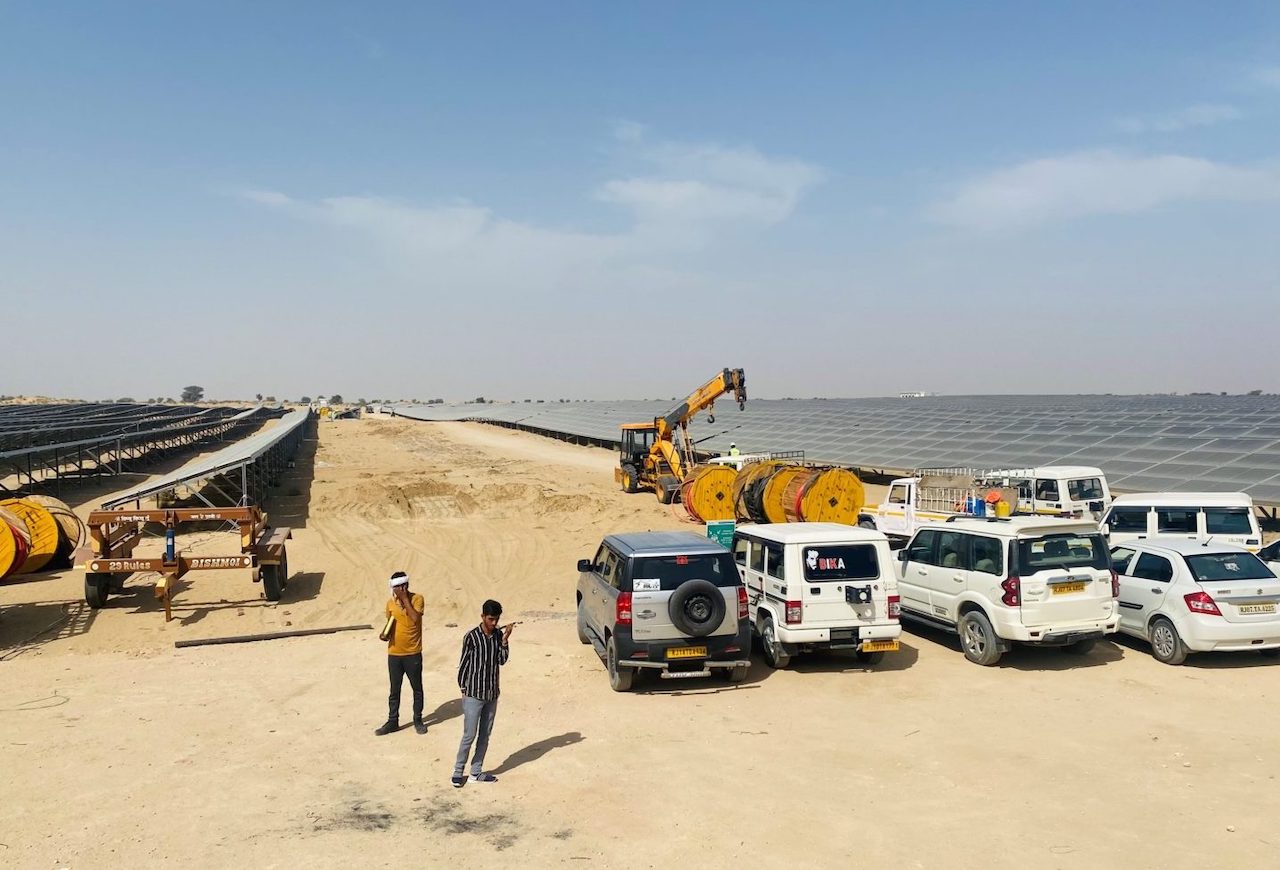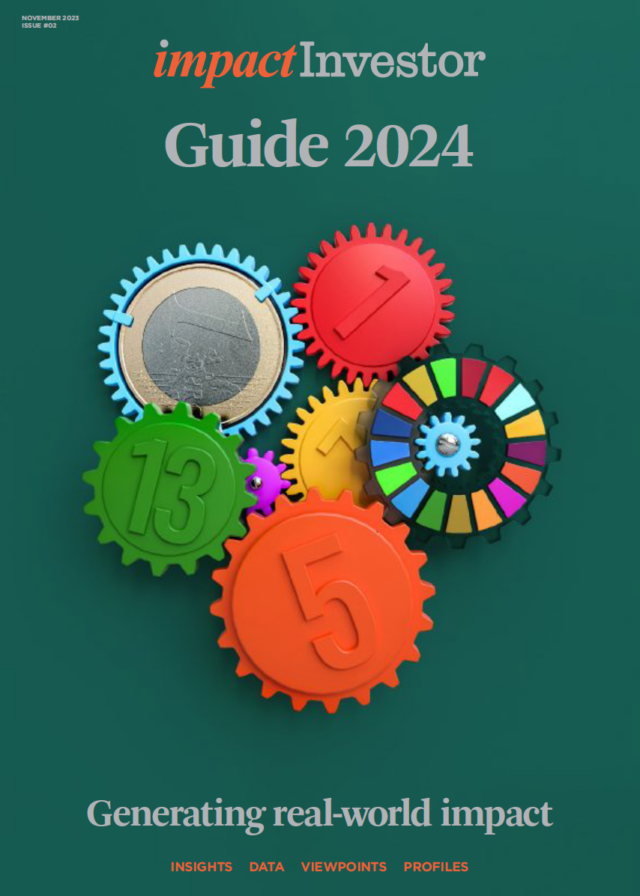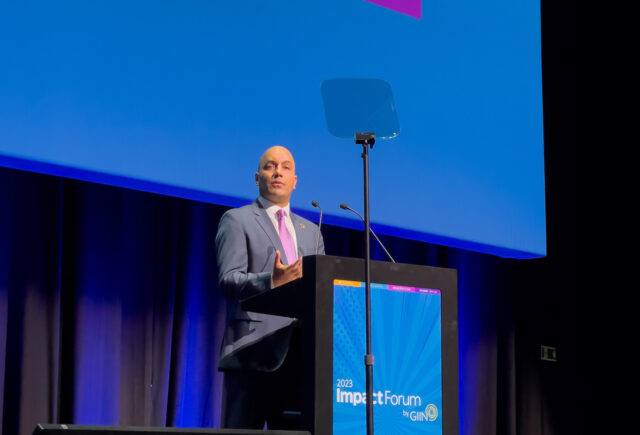
Artikel
05
januari
Two investors, two impact investing journeys
The Visa Foundation and Norway’s development finance institution Norfund share their perspectives on impact investing and how their organisations put it into practice.

Signe Sørensen, senior economist, Norfund:

Norfund identifies itself as an impact investor. We are commercially-oriented and strongly believe that by ensuring our investments are financially viable, we can also ensure a longer lasting impact, including post exit. This is also important because as an organisation with high visibility, we can prove the case to private investors that investing in the 30 core countries that we target, namely across Africa, South-East Asia and Latin America, actually pays off.
But we also face a dilemma. Whilst a central part of our mission is to ‘boldly go’ where others daren’t, we also want to attract capital to invest alongside us. Encouragingly, today, there are many more players in the impact investing space than there were even just five years ago, and we are seeing a growing interest from private investors in what we do, through their eagerness to either dialogue with us and learn from our experience or to invest alongside us.
We recently invested alongside a local pension fund and charity SOS Children’s Villages in the Katapult Africa Accelerator Program, which invests in agri and foodtech startups across the African continent.
One of our distinguishing characteristics is our development mandate’s focus on four distinct investment areas, namely renewable energy; financial inclusion through investments in financial institutions lending to the SME segment in particular, as well as in microfinance and fintech; scalable enterprises in the agribusiness value chain and manufacturing; and finally, green infrastructure. These are sectors where we can make an impact and bring additionality to carefully selected investments.
We are also a minority investor but are able to take on more risk through our equity-focused investment portfolio, thanks to our 100% funding through the Norwegian development aid budget.
About 26% of our development mandate is invested in impact funds, such as those managed by Katapult, which has also allowed us to increase our exposure to early stage ventures. Our investment strategy has evolved over time both in terms of the types of investment we make and in response to the accelerating climate crisis, and we believe the ability to be agile as a DFI is extremely important.
All the earnings we make from the successful businesses we have backed are reinvested to grow our portfolio and extend it to new opportunities. One example is the sale of our holding in SN Power, a leading hydropower company we developed over several years, from which a share of the earnings have been channelled into the new Climate Investment Fund that the Norwegian government has given us the mandate to manage. We had already integrated climate considerations into our existing development mandate, but we have now set aside NOK 5bn (€422m), which has been matched by a further NOK 5bn from the Norwegian government, to invest into the renewable energy sector in developing countries with the goal of maximising climate impact. Since the fund’s launch last year, we have already committed more than NOK 2bn to projects in India, South Africa and Sri Lanka.
Our local presence in the regions in which we invest, our understanding of the local context as well as our clearly defined standards and strong emphasis on ESG with our investee companies, also helps to de-risk the investment environment for others. This does not mean that things do not go wrong. Like any investor, we do encounter challenges and not every investment will succeed.
We do not, however, de-risk investments directly and although there are some fantastic blended finance initiatives driving private capital into high risk areas, we have also seen how some blended finance is creating distortions in the market, by offering investees extremely low interest rates but failing to attract institutional and other private sector investment because the businesses backed are not financially viable.
Looking ahead, with multiple environmental and geopolitical crises unfolding across the world, we, as a DFI, are conscious of the need to be responsive, to really understand the market, the context of the countries in which we operate and the role we can play, both in terms of capital investment and offering our expertise, knowledge and network connections to drive impact.
Over the years, we have collaborated with KLP, Norway’s largest pension fund, and have established a joint venture allowing us to co-invest into large scale renewable energy projects across our markets.
Rising global instability has made it more difficult to attract capital to higher risk areas but we hope that over time, we can establish more of these partnerships to direct capital to where it is needed most.
Najada Kumbuli, head of investments, Visa Foundation:
The United Nation’s 17 Sustainable Development Goals (SDGs) were designed to engage various stakeholders, and in particular the private sector, to address the world’s most pressing challenges.
We are halfway into the UN’s 15-year timeline and unfortunately, significant setbacks from COVID-19 combined with escalating and intensified humanitarian crises have widened the financing gap from $2.5trn (€2.3trn) per year to $4.3trn. An estimated $30trn of additional investments must be made over the next seven years to meet the SDGs, and the private sector, including corporations and corporate foundations, has a major role to play.
Specifically, the private sector can bring significant resources to bear in an effort to bridge the financing gap and draw us collectively closer to meeting the SDGs. In the US for example, private sector spending of $22trn is more than 7x government spending and 20x the non-profit sector. Given the extent of capital available in the market, key questions are 1) how to effectively mobilise that capital for impact and 2) how to leverage the right tools needed to address specific, socio-economic challenges. For example, in addition to traditional corporate social responsibility (CSR) efforts and philanthropic giving, many companies are incorporating impact investing as a tool to double down on their impact goals.
Investing capital to drive impact is not only an efficient way to utilize capital, it complements corporate philanthropic giving, which is a fraction of both total philanthropic resources in the US($484bn) and private sector activity, as outlined in the Global Impact Investing Network’s recent report.
Early on, Visa Foundation recognized the importance of impact investing and therefore implemented an “asset utilization” strategy. In other words, we intend to drive an attractive financial return on our investments while generating significant social and environmental impact. Deploying our impact investing strategy in this way was a recognition that philanthropic giving alone could not solve the complex challenges faced by small businesses. What’s more, the impact investing industry has significantly grown and matured over the last two decades to over $1.2trn, thereby creating ample pipeline for investment opportunities that allow us to fulfil our fiduciary duty and generate impact.
The Foundation’s impact investing approach encompasses diverse asset classes, such as private debt through community development finance institutions, early-stage venture capital (who are in turn investing in women entrepreneurs), real assets, and mezzanine financing firms led by women who are investing in sustainable and impact-focused growth companies.
Applying a gender lens to our investments can help catalyse innovation, impact, and a prudent financial return, while also helping to address the disparity that exists in the amount of capital that is managed by diverse teams (an estimated 1.4% of U.S.-based assets under management are managed by diverse-owned firms).
Visa Foundation focuses on creating inclusive economies by empowering small businesses around the globe, in particular women-led small businesses, to thrive. Our dual approach of grantmaking and impact investing can enable us to holistically address the issues small businesses face while also deploying more capital on the ground.
The Foundation’s work has been complemented by additional impact investing activity through Visa Inc.’s Treasury and Ventures departments, compounding the impact both organizations (Visa and Visa Foundation) can have on reducing the global financing gap.

This article is part of the editorial content of the Impact Investor Guide 2024. You can download a digital copy of the guide here.
Latest articles
What's your reaction ?
Follow us on Social Media
Some Categories
Recent posts

July 27, 2024
Nieuwe kabinetsvisie: samen sterker tegen cyberdreigingen

July 24, 2024
Navigating AI Implementation: Try these strategies to overcome resistance.

July 24, 2024
Sick Leave Policy Netherlands Guidance for HR and Entrepreneur.

July 24, 2024
CSRD Reporting: Mandatory Reporting on Corporate Sustainability.

July 24, 2024
Training Budget: Investing in Employee Development.

 Inloggen
Inloggen
 Registreren
Registreren













Comments (0)
No reviews found
Add Comment